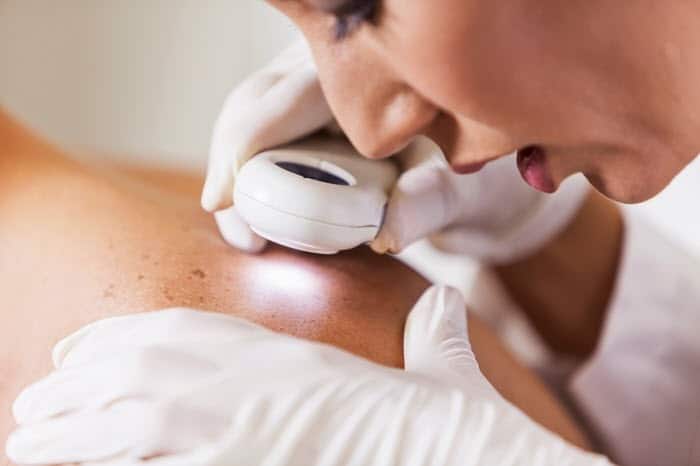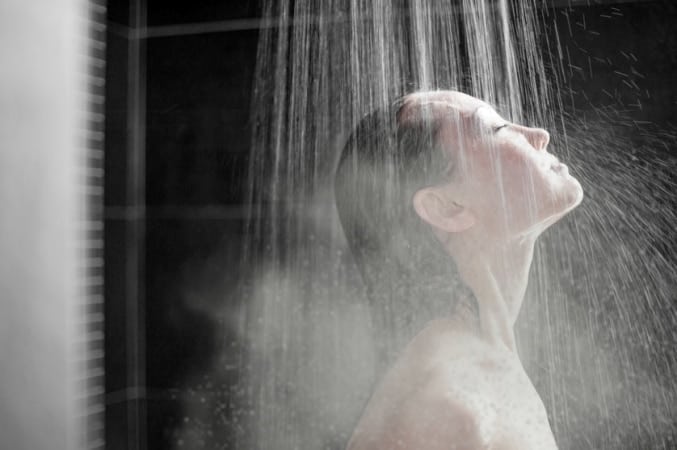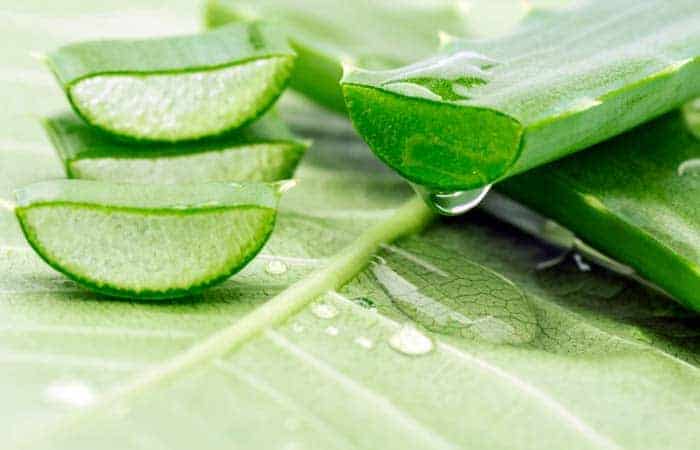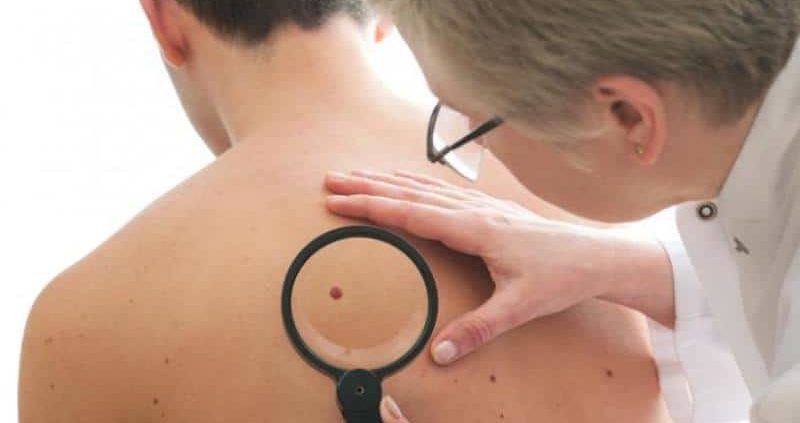Urticaria pigmentosa, also known as Mastocytosis, is an allergy-mediated skin condition. Discolored lesions and itchy skin are the common indications of this condition. The presence of many mast cells in your skin categorizes this skin condition.
Mast cells are an integral part of your immune system. Their job is to produce inflammation by releasing a substance named Histamine. There are many food items that cause histamine intolerance.
Histamine is produced in response to germs and other such invaders. In Urticaria pigmentosa, there are too many mast cells in your skin. Let’s see more about the disease in the article.
This disease is mostly observed in infants and children. But adults are also affected as well. The main symptom is dark-colored lesions on your skin. The lesions are generally very itchy and it is difficult not to scratch them.
When you violently scratch, the lesions respond to the Darier’s sign. A Darier’s sign looks very similar to hives. It is caused by the release of histamine from mast cells.
In most children, Urticaria pigmentosa goes away when they hit puberty. Complications are generally only seen in older children or adults. Very rarely, Urticaria pigmentosa evolve into a systemic mastocytosis in an adult.
In systemic mastocytosis, the mast cells might build up in other organs of your body.
In rare scenarios, this may result in a mast cell leukemia or a mast cell sarcoma. Both of them are forms of cancer.
Table of Contents
Causes Of Urticaria Pigmentosa
The exact cause of this skin disease is not known. There might be a genetic cause to explain some cases. The child can either inherit an abnormal gene from one of his or her parents, or there might be a gene mutation.
The other cases come into view for no reason at all. The inherited form of Urticaria pigmentosa is a very rare occurrence. There were only about 50 documented cases of the same.
To become familiar with this skin condition, it is necessary for you to be aware of the causes.
There can be different causes for this condition and they may include:
i. Point Mutation And Amino Acid Of Proto-Oncogenes C-Kit
In most cases of urticaria pigmentosa is caused by amino acid and point mutation proto-oncogence c-kit. Now, it brings us to the question- What is c-kit?
C-kit is a transmembrane protein. When this sticks to mast cell growth factor (MCGF), it directs the cell to split up. This eventually results in an abnormal proliferation. These mutations and the onset of the urticaria pigmentosa outbreak is closely associated.
ii. Rubbing Of The Lesions
Rubbing of the lesions produces a speedy wheal and bumps all over your skin. Most of the children can develop fluid-filled blisters when they scratch or rub the affected skin area.
Usually, a huge amount of histamine is released from the mast cells. This causes conditions like diarrhea, flushing, headache and a rapid heartbeat. But, this is not that common with urticaria pigmentosa. It is usually found in other forms of mastocytosis.
It is also necessary to be aware of the symptoms and signs of urticaria pigmentosa. That way it is easier for you to determine the skin disease.
This rare skin disease has similar signs and symptoms like any other skin disease. As a result, it is challenging to differentiate urticaria pigmentosa from the others. Here are some of the symptoms of urticaria pigmentosa:
iii. Facial Flushing
The Regular flushing of the face which includes your face getting a reddish tint to it.
iv. Blister Formation
Blister formation over the lesions might take place if it is constantly rubbed.
v. Brownish Lesions
Brownish lesions on your skin indicate you may have this particular skin problem.
vi. Red And Brown Spots
Red and brown spots on your skin are signs of the skin irritation.
vii. Diarrhoea
Binges of diarrhoea is a very common symptom associated with this particular skin problem. When this symptom crops up, this can usually show that your skin condition could only be getting worse.
viii. Emotional Stress
Urticaria pigmentosa and emotional stress are greatly associated with each other. You are prone to experience emotional imbalances when you start developing urticaria pigmentosa.
Some of the other symptoms that might be experienced include palpitations and fainting. Fainting is generally a rare phenomenon. But, it is found in almost all cases that are left untreated. This, in turn, can cause more harm to you if you leave it untreated.
You are now aware of the symptoms and signs of urticaria pigmentosa. This will help you to identify this skin condition easily. This way you will be able to apply the most suitable and effective remedy for yourself.
There are many existing treatment methods that are available. But it would be the best to apply natural home remedies. They are not only effective, but also the safest treatments available.
Diagnosis Of Urticaria Pigmentosa

The diagnosis of Urticaria pigmentosa is solely based on observation of the lesions on your skin. Darier’s sign is the most classic symptom of all! It implies that Urticaria pigmentosa and most of the lesions look similar in colour. Lesions that appear unlike the others might be a sign of cancer.
The possible cancers include:
- Basal cell carcinoma– It is the uncontrolled growth of the outer layer of the skin.
- Actinic Keratosis– It is a precancerous scaly patch of skin that is caused by years of sun exposure of the skin.
Your doctor is going to test any unusual looking lesions for cancer. This requires a small skin sample for the microscopic examination and testing. A skin biopsy will also be recommended for the same. A few blood tests may also follow, in order to confirm the presence of cancer.
Treatment For Of Urticaria Pigmentosa
There are no such permanent cures for urticaria pigmentosa. But, the treatments are possible. The treatment focuses on easing the symptoms and controlling the lesions. Most treatments for Mastocytosis are also used for treating urticaria pigmentosa.
Many common anti-allergic medications are useful too. It is because they decrease the mast cell’s capability to react to the histamine.
Your doctor is likely to recommend a treatment based on the number of lesions and your tolerance level.
Treatment options include:
- Antihistamines– Used to relieve itching and flushing of the skin.
- Topical corticosteroids– It is an ointment with anti-inflammation properties.
- Intralesional corticosteroids – An injection with anti-inflammatory steroid medications.
- Fluocinolone acetonide– A synthetic corticosteroid.
- Hydrocolloid dressings– Act like a bandage to hold the medication to your skin.
- Chlorpheniramine maleate– An antihistamine used to control allergic reactions.
In adults, a form of therapy known as Photochemotherapy can be implemented. This is done using ultraviolet radiation that has proven to be an effective form of treatment.
For encouraging recovery:
- Do not rub your skin very often.
- Do not pick at the blisters, no matter how tempting they might seem.
- Don’t scratch the lesions. This is only going to send out more histamines thus creating hives all over.
- People with urticaria pigmentosa should avoid medications like: Aspirin, Codeine, Opiates
- Alcohol consumption must also be limited or eliminated since it can be a trigger for urticaria pigmentosa.
Natural Remedies For Urticaria Pigmentosa
Home remedies are always better because they are absolutely natural. They also do not cost you too much of money.
Listed below are some helpful and effective natural remedies that you can easily find at home:
1. Hot Bath

A hot bath is the most effective home remedy available for this rare skin disease. Taking a hot bath every day can help you prevent releasing a great amount of histamine that is usually responsible for the hives, itching, and flushing.
You can add neem leaves to it as well. Neem leaves will help you soothe the itching as well.
2. Aloe Vera

Aloe Vera is believed to have many healing properties. One of them helps you in reducing skin inflammation, and also provides a protective coating to your skin. It will help you get rid of the itchiness, stinging pain and the redness.
Aloe Vera can be applied as the gel to help ease the intense irritation that is caused.
3. Ginger

Ginger is yet another natural remedy that can eradicate the symptoms of urticaria pigmentosa. It rapidly puts down the onset of itching, hives and allergic responses.
Since this remedy is antihistamine and anti-inflammatory, it also aids in improving your skin’s circulation and removes the inflammatory waste products.
4. Green Tea

Green tea contains strong antihistamine properties. This helps you to reduce all hives and allergic inflammations on your skin. This natural treatment also has a high amount of flavonoids and polyphenols, as well. Both of them are antioxidants and very good for your health.
These antioxidants protect you against any toxic damages to the skin tissues. In the long run, this will also help improve your immune system. Consume this herbal tea daily and you will soon see improvements on your skin in the fullness of time.
5. Oatmeal With Hot Water

Simply take a thick and dense paste by mixing oatmeal and hot water in the required proportion. After you make the thick paste, apply the solution on the affected areas of your skin.
The paste is going to harden soon after it cools down. Rinse off immediately with plain water after it hardens. Pat dry with a towel. You may or may not apply aloe vera gel after this.
6. Milk Of Magnesia
There is a theory that milk of magnesia is an effective remedy for urticaria pigmentosa. Milk of magnesia is a little alkaline in nature. This helps you soothe the burning sensation and itchiness caused by urticaria pigmentosa.
These are a few of the most effective and safe home remedies for urticaria pigmentosa. They are easily available at home so you can apply them anytime you want. This is the best approach for overcoming the skin problem as you do not need to spend a huge amount of money on this.
If your skin problem is a severe case, it is the best that you consult a doctor for a proper diagnosis and treatment.
Natural remedies isn’t the best treatment for the severe cases of urticaria pigmentos. But, you can always give them a try without any major risks to your health.
Complications Associated With Of Urticaria Pigmentosa
Most cases of urticaria pigmentosa affect only your skin. Cases where it affects other organs or is generally found in older children and adults.
Organs which may be affected by urticaria pigmentosa include:
- Liver
- Bone marrow
- Spleen
Unfortunately, the treatment for urticaria pigmentosa can have some unintended side effects.
Side effects of the prolonged treatment include:
- Red skin syndrome (corticosteroid withdrawal)
- Diabetes mellitus (glucose intolerance due to chronic use of steroid therapy)
- Insulin resistance (body grows immune to the presence of insulin)
Prevention Of Urticaria Pigmentosa
There is no sure way to prevent this skin disease. The inherited form of this skin problem is extremely rare. Even if the child has an abnormal gene, they may not ever develop urticaria pigmentosa.
But, you can prevent this skin disorder from getting worse. Try to keep your child away from scratching and rubbing the irritated skin. This will help you to prevent the lesions from spreading.
- Avoid having hot baths to avoid drying out of the skin and making the itching worse.
- Bathing in lukewarm water with Aveeno oil has been proven to control the itching.
- Avoid irritating clothing. You must try to wear cotton or other light fabrics.
- Keep your fingernails short
Your doctor will have more tips. Most cases of urticaria pigmentosa clear up by the time the child is a teenager.
Final Talk
As we already saw, this skin disease is more likely to affect babies and infants. But that doesn’t exclude adults out of the equation. It is mostly harmless, but the symptoms are very difficult to cope with.
It is a common concern among everybody- Is urticaria pigmentosa contiguous? The answer is no! The hives that are formed due to itching are not contagious. But, they contain viruses that are capable of transmitting from one another, the answer is yes.
Stop falling into the trap of negativity by doing nothing to treat your skin problems. You must certainly do something positive in order to overcome the problem as soon as possible. You just need to unearth and make use of the most suitable remedy for urticaria pigmentosa!
Also, Read
How To Get Rid Of Hives Permanently
Urticaria Pigmentosa : Causes,Symptoms & Home Remedies





